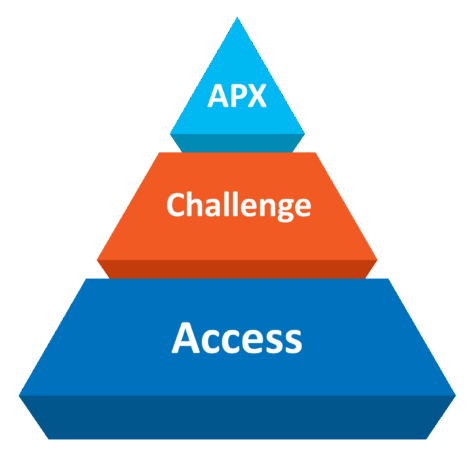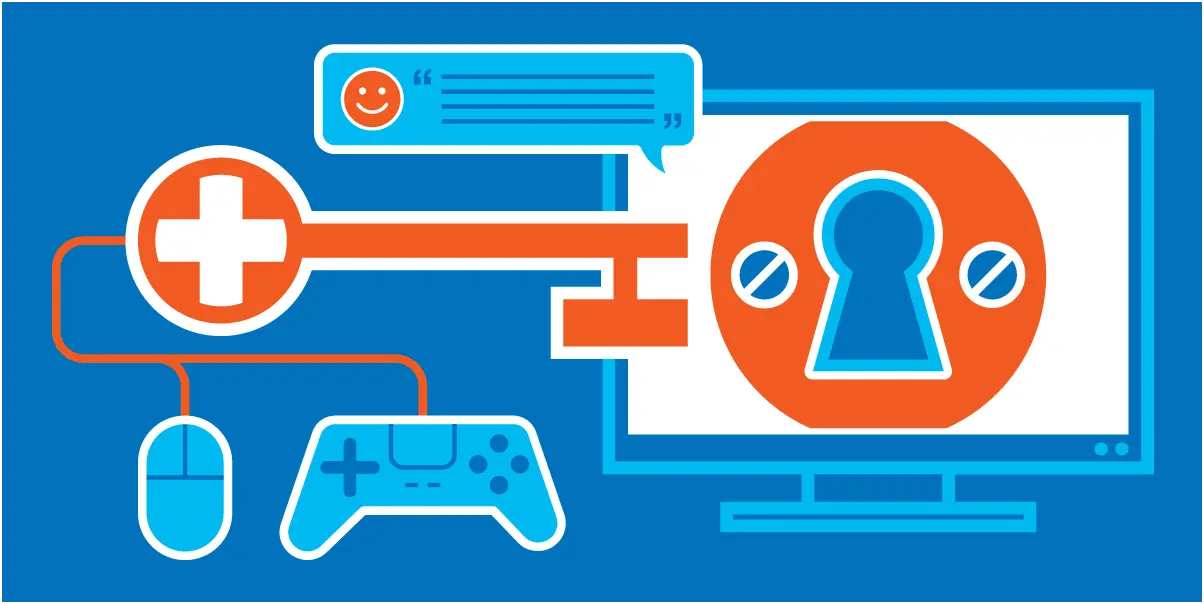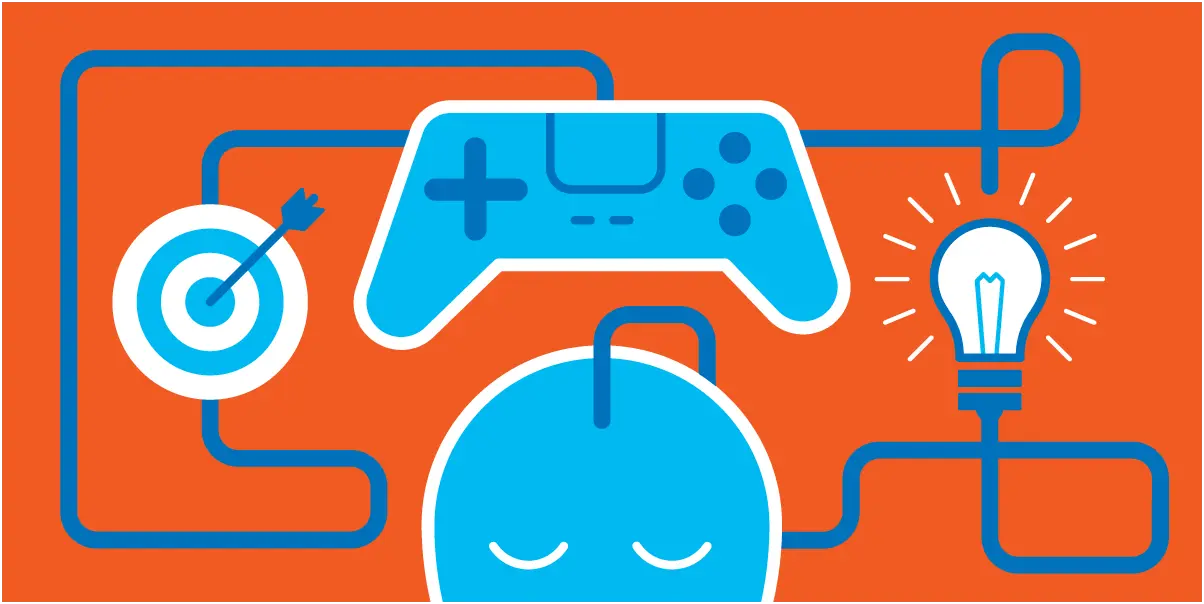Accessible Player Experiences (APX)
Games are all about experiences
Players seek experiences any time they begin playing a game – the experience of socializing, the experience of challenging oneself, the experience of relaxing after a hard day, the experience of escaping into a world where the impossible is possible, and so much more. Games, in turn, give players experiences – and all players seek out combinations of these experiences and more.
Players with disabilities are no different.
To even attempt to have these experiences, players with disabilities face extra barriers: things that make common game activities more difficult or potentially impossible for them. When a player cannot use a game’s controls to steer a car, cannot receive visual and audio feedback to be able to successfully shoot an arrow at a target, or cannot process the information needed to strategize the best path to take while climbing a mountain, they aren’t just missing out on playing a game. They are missing out on the experience of being a Formula 1 driver, or a legendary warrior, or an adventurer in a fantasy world.
With APX, we have created approach that works with all of your existing game accessibility processes – or can start you on your accessibility journey, if you have yet to begin. The goal is to enable you to focus on making these experiences possible for players, allowing them to play the way they need to and want to, while staying true to your team’s creative vision.
For more information on APX, continue reading below.
To jump right to the APX Patterns, click here
For info about our Certified APX Training, click here!
What is APX?
Accessible Player Experiences® (APX) is a set of design patterns that empowers you, the game developer, to identify accessibility barriers in your games at all stages of development and brainstorm solutions to those barriers.
Think of these patterns as a set of lenses through which your team can examine your game’s concepts, visual and audio implementation, gameplay mechanics, and more, to find areas where players may face extra challenges due to their disabilities.
APX was created directly from player feedback; information was gathered on a wide range of issues that players with disabilities face in games. That data was then organized into design patterns that present problems, provide examples of why these problems might be a concern, and expose broad categories within which solutions may be found.
The key to APX is that you are no longer designing for specific disabilities; rather, you are designing for barriers that players with a wide range of disabilities might all have. It is not necessary to think of why a specific player might have a specific problem, because these barriers greatly overlap between multiple disabilities. Designing for the barrier, rather than for the disability, makes accessible game design and development into a creative process that revolves around generating ideas alongside your game, rather than an evaluative process at specific milestones during development.
Ultimately, in using APX, your team will form a design language around accessibility, speeding up both the discovery of accessibility barriers and discussions around solutions, and leading to amazing Accessible Player Experiences in your games. To help with this, APX can be divided into three layers, represented by the APX Triangle.

The APX Triangle
Since APX has 22 design patterns in total, it can sometimes be difficult to know which pattern to use to try to find barriers in different parts of your game. To help with this, APX is divided into two broad categories: Access and Challenge.
Access
Before anyone can play your game they need access to it. This means that the player needs to be able to give info to the game about what they want to do (by using the game’s controls) and also getting info from the game (typically through visuals, audio, and haptic feedback) about the various things in the game they need to be aware of, respond to, and interact with.
If a player cannot tell the game what they want to do (via using the game’s controls) or cannot take in the information about the game (via seeing, hearing, and feeling the info presented to them), they cannot even begin to play the game. As such, Access is foundational to accessible game design, and is the foundation of APX.
If you have limited time, budget, and resources, and cannot address all accessibility issues, then Access should be your priority!
There are 12 APX Access Patterns in total, which are further categorized into Control Patterns and Presentation Patterns to make it even simpler to find and solve accessibility barriers in your games related to Access.
Challenge
Once a player has access, they may still face difficulties in playing the game – typically, within the same places that ALL players face difficulties: the gameplay itself.
Gameplay refers to the actual mechanics, activities, narrative, and other aspects of the game the player engages with. Common gameplay elements, such as reacting quickly, learning and implementing strategies, remembering what is required, performing actions, and having strong emotional responses to content can all become extra difficult or potentially impossible for players with disabilities for a variety of reasons. Finding and solving these accessibility barriers within gameplay can be done using the APX Challenge Patterns.
This doesn’t mean you need to remove challenge from your game. To the contrary, most players, including players with disabilities, want challenges in games. It is important to realize, though, that what is “difficult” for one player might be literally “impossible” for a player due to disabilities. As such, accessibility is not about eliminating challenge; it is about adding flexibility to challenge, so that players can fine-tune the game experiences to make them playable.
There are 10 Challenge Patterns, and while not as foundational as Access, Challenge is still crucial to gameplay, and a vital component to game accessibility.
APX Design Language
Ultimately, the Access Patterns and Challenge Patterns come together to form a design language – a way of talking with your team about accessibility in a fast, efficient way, to more effectively examine your fame for accessibility barriers and brainstorm solutions to them. The goal is to ensure that players have the Access they need and can barriers they face in Challengess so that they can have the experience with the game they want to have – and the experience that you want them to have.
In other words, the goal is to create Accessible Player Experiences.
The APX Design Patterns
Learn a Design Language to make game accessibility easier to understand and discuss
Learn more about how APX works, above



Subscribe to get Email Updates!
Subscribe to our mailing list to get the updates to your email inbox.

